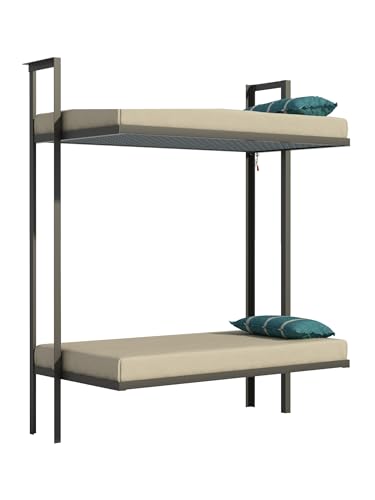I’ve always loved the idea of transforming my outdoor space, but the costs of landscaping can quickly add up. Luckily, with a few smart strategies, you can make your DIY landscaping dreams a reality without breaking the bank.

From repurposing materials to choosing budget-friendly plants, there are plenty of ways to save while still creating a beautiful yard. I’m excited to share some of my favorite tips that will help you achieve stunning results without draining your wallet.
Whether you’re a seasoned gardener or just starting out, these money-saving ideas will inspire you to create the perfect outdoor oasis on a budget. Let’s dive in and explore how you can enhance your landscape without overspending.
Planning Your DIY Landscaping Project
Planning is essential to ensure your DIY landscaping project stays on track and within budget. Careful preparation can save time and reduce costs significantly.
Setting a Budget
Establishing a clear budget guides your project decisions and prevents overspending. I allocate specific amounts for materials, plants, and tools, ensuring each category aligns with my overall financial plan. Prioritizing essential elements first allows flexibility for optional enhancements if funds permit.
Selecting Cost-Effective Materials
Choosing affordable materials maximizes your landscaping impact without breaking the bank. I opt for recycled or repurposed items, such as using reclaimed wood for garden beds or recycled plastic for edging. Additionally, sourcing materials during sales or buying in bulk reduces costs further, enabling me to achieve a high-quality look on a limited budget.
Tools and Equipment
Choosing the right tools saves time and money on DIY landscaping projects. Deciding whether to rent or buy can significantly impact your budget.
Renting vs Buying Tools
Renting tools suits occasional projects, reducing initial expenses. Buying tools benefits frequent use, offering long-term savings. If you use a tool multiple times, purchasing it proves more cost-effective than renting repeatedly.
Essential Tools for Savings
Having essential tools streamlines tasks and cuts costs:
- Shovels for digging and soil moving
- Rakes to level ground and clear debris
- Pruners for trimming plants and shrubs
- Wheelbarrows to transport materials efficiently
- Gardening Gloves to protect hands and improve grip
Investing in these key tools ensures durability and efficiency, minimizing the need for replacements and additional purchases.
Cost-Effective Landscaping Techniques
Implementing cost-effective techniques can significantly reduce expenses in your DIY landscaping projects. Here are some strategies to consider:
Reusing Materials
Repurposing materials lowers costs and adds unique elements to your landscape. I reuse items like old pallets for raised garden beds, saving approximately $50 per project. Additionally, glass bottles make excellent edging, providing both functionality and aesthetics without extra expense.
Choosing Affordable Plants
Selecting budget-friendly plants ensures vibrant landscaping without overspending. I opt for native species, which thrive with minimal maintenance and cost around $10 each. Furthermore, propagating plants from cuttings reduces the need to purchase new plants, allowing me to expand my garden economically.
Labor and Time Management
Efficient labor and time management streamline DIY landscaping projects. Organizing tasks reduces delays and labor costs.
Task Prioritization
Prioritize tasks based on complexity and resources. Start with foundational work like grading and drainage, then move to planting and decorative elements.
Scheduling
Create a detailed schedule to allocate specific time blocks for each task. Assign deadlines to maintain momentum and ensure timely project completion.
Tool Utilization
Use tools that increase efficiency, such as power mowers and automated irrigation systems. Selecting the right tools minimizes effort and saves time.
Workforce Allocation
Delegate tasks to family members or friends to distribute the workload. Coordinating efforts accelerates progress and reduces individual labor demands.
Break Management
Incorporate regular breaks to maintain productivity and prevent burnout. Short pauses enhance focus and sustain energy levels throughout the project.
« Maintaining Trees: Pruning and More Tips for Healthy, Beautiful Trees How to Install a Garden Edging: Easy Steps for a Perfect Outdoor Space »
Skill Development
Learn essential skills through tutorials and workshops. Enhancing expertise allows for quicker task execution and higher quality results.
Time Tracking
Monitor time spent on each task to identify areas for improvement. Analyzing time allocation helps optimize future project planning and execution.
Efficient Material Handling
Organize materials in accessible locations to avoid time wasted searching. Proper storage ensures materials are readily available when needed.
Rest Days
Schedule rest days to recover and assess project progress. Taking breaks ensures sustained productivity and project continuity.
Contingency Planning
Prepare for unexpected delays by allocating buffer time in the schedule. Being adaptable accommodates unforeseen challenges without significant setbacks.
Maintenance for Long-Term Savings
Regular maintenance extends the lifespan of your landscaping, reducing the need for costly replacements. I schedule weekly inspections to identify and address issues before they escalate. Spotting problems early prevents expensive fixes later.
Selecting low-maintenance plants cuts ongoing costs. I choose native species that thrive with minimal care, lowering water and fertilizer expenses. These plants also resist pests and diseases, decreasing the need for treatments.
Implementing mulching conserves moisture and suppresses weeds. I apply a 2-3 inch layer of mulch around plants, which reduces watering frequency and minimizes weed growth. This practice maintains soil health and reduces the time spent on weeding.
Efficient irrigation systems save water and lower utility bills. I install drip irrigation to deliver water directly to plant roots, minimizing evaporation and runoff. Automated timers ensure consistent watering schedules, optimizing water use and preventing overwatering.
Proper pruning and trimming enhance plant health and appearance. I prune shrubs and trees in late winter, promoting strong growth and preventing breakage. Regular trimming maintains the desired shape, reducing the need for drastic landscape changes.
Maintaining tools and equipment ensures their longevity and performance. I clean and store tools after each use, preventing rust and wear. Sharp blades and well-maintained machinery operate more efficiently, saving time and reducing the frequency of replacements.
Seasonal tasks prepare the landscape for changing weather. In fall, I remove debris and protect plants from frost, while in spring, I prepare beds and plant new additions. These proactive measures prevent damage and support sustained plant growth throughout the year.
By following these maintenance practices, I achieve long-term savings and enjoy a beautiful, resilient landscape with minimal ongoing costs.
Conclusion
Transforming your outdoor space on a budget is totally achievable with a bit of creativity and planning. I find that every project brings its own set of rewards, not just in savings but in the joy of seeing your vision come to life. By repurposing materials and choosing the right plants, you can create a beautiful landscape without breaking the bank. Plus, managing your time and resources wisely makes the process smoother and more enjoyable. Watching your yard evolve with each thoughtful decision is incredibly satisfying. Here’s to making your DIY landscaping dreams a reality without overspending!
















